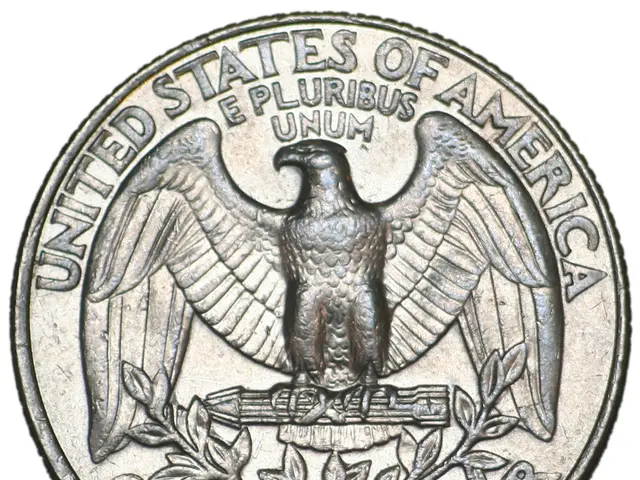Sky-high Producer Inflation Marks a Three-Year High in July, According to U.S. Data
In a recent development, the Producer Price Index (PPI) has shown a significant increase, indicating that the costs of goods for producers are on the rise. According to the Department of Labor, the PPI rose 0.9% on a month-on-month basis in July.
This increase can be attributed to a variety of factors, with much of it stemming from building price pressures for businesses due to compounding tariff impacts. Economist Ben Ayers from Nationwide noted that input costs for producers jumped in July.
The tariffs, which are currently averaging an effective rate of 18.6%, have led to a short-run increase in consumer prices by about 1.8%. This equates to a notable consumer cost burden, equivalent to an average household income loss of approximately $2,400 annually.
The effects of these tariffs have been most obvious within certain product categories, such as metal and food. For instance, readings for steel and aluminum - both targeted with 50-percent levies - have shown a significant jump in recent months.
However, the overall inflation as measured by the Consumer Price Index (CPI) has not surged dramatically, partly because companies often delay passing tariff-related cost increases to consumers to avoid losing market share. Experts acknowledge that tariff impacts on inflation tend to be delayed and diffuse throughout the economy, meaning significant price spikes could still materialize later.
Fed policymakers are closely monitoring the impact of tariffs on consumer inflation. Matthew Martin, senior US economist at Oxford Economics, expects more of the tariff burden borne by companies to pass through to consumer prices in the coming months.
The advance in PPI exceeded analysts' expectations, with a consensus forecast expecting a much smaller jump of 0.2%. Prices for final demand goods made a significant advance in July, with 40% of the increase traced to foods.
The Federal Reserve is facing complexity in balancing inflation risks with the health of the labor market. Recent hiring numbers were significantly weaker than estimated, raising the odds of a September rate cut by the central bank.
The PPI data provides a counter-balance to recent reports about hiring numbers and highlights the Fed's dilemma. As the tariffs continue to impact businesses, it remains to be seen how these costs will eventually be passed on to consumers and what impact this will have on the overall economy.
Read also:
- President von der Leyen's address at the Fourth Renewable Hydrogen Summit, delivered remotely
- Unveiling Innovation in Propulsion: A Deep Dive into the Advantages and Obstacles of Magnetic Engines
- Intensified farm machinery emissions posing challenges to China's net-zero targets
- EU Fuel Ban Alerts Mercedes Boss of Potential Crisis







